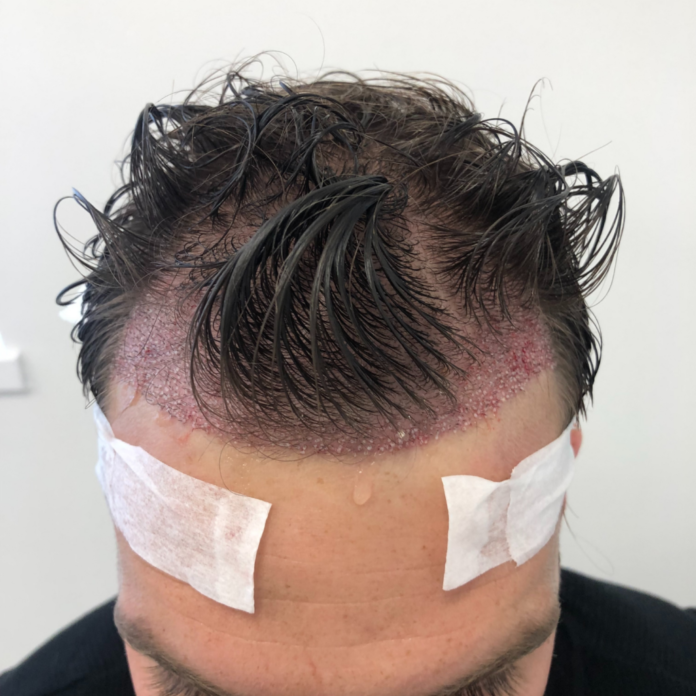Hair loss can subtly or dramatically change your appearance, affecting everything from your hairstyle options to your self-esteem. One of the most effective and lasting ways to counteract thinning or balding is a hair transplant. It’s a medical procedure designed to restore hair growth in areas of the scalp that have little to no hair. Whether you’re considering this procedure due to pattern baldness, a receding hairline, or thinning areas, it’s essential to understand how exactly it works and how it can help you regain a fuller, natural look. Procedures like a Hair Transplant in Dubai are becoming increasingly popular as people seek long-term, natural-looking solutions.
What Is a Hair Transplant?
A hair transplant is a surgical technique that involves removing hair follicles from one part of the body, commonly called the “donor site,” and implanting them into the balding or thinning area, known as the “recipient site.” It is most commonly used to treat male pattern baldness, though it’s also suitable for women and for restoring eyebrows, eyelashes, and even beard hair.
There are two primary methods of hair transplantation:
- FUT (Follicular Unit Transplantation) – A strip of scalp is removed from the donor area, and individual follicular units are dissected under a microscope before being transplanted.
- FUE (Follicular Unit Extraction) – Hair follicles are individually extracted and then implanted directly into the recipient area. This method is less invasive and leaves minimal scarring.
How Hair Transplants Restore Your Appearance
The effectiveness of a hair transplant in restoring your look lies in its ability to replace lost hair with your own naturally growing hair. Here’s how it revitalizes your overall appearance:
1. Natural Hairline Reconstruction
One of the primary goals in any transplant is recreating a natural-looking hairline. Surgeons carefully plan the design and density to match your facial structure, age, and previous hair growth patterns. A well-designed hairline frames the face, making you appear younger and more vibrant.
2. Volume Restoration
Transplanted hair increases the overall volume in thinning areas, giving a fuller, healthier look. Volume isn’t just about density—it’s about strategic placement to ensure hair grows in the natural direction, replicating how hair used to grow.
3. Scar Camouflage
People who have scars on their scalp due to injury, surgery, or previous failed transplant procedures can benefit. Hair is implanted into scar tissue, helping blend the area with the rest of the scalp and restoring a consistent appearance.
4. Improved Facial Harmony
Hair contributes significantly to the balance of your facial features. Whether it’s a widow’s peak, temple definition, or sideburn restoration, hair transplants bring harmony back to your face, enhancing your overall attractiveness.
5. Psychological Confidence Boost
Appearance greatly influences self-esteem. Hair restoration can improve mental well-being, leading to greater confidence in social, romantic, and professional settings.
Phases of Hair Transplant Recovery and Hair Growth
Hair restoration is not instant. It goes through distinct phases after surgery before delivering the final results.
| Phase | Timeframe | What Happens |
|---|---|---|
| Immediate Recovery | 1-7 Days | Mild swelling, redness, and scabbing. Grafts settle in place. |
| Shedding Phase | 2-6 Weeks | Transplanted hairs fall out—this is normal and expected. |
| Dormant Phase | 1-3 Months | Hair follicles remain under the skin; no visible growth yet. |
| Initial Growth Phase | 3-5 Months | Thin, fine hair starts emerging from the grafts. |
| Substantial Growth Phase | 6-9 Months | Hair thickens, texture improves, and coverage becomes noticeable. |
| Full Results | 12-18 Months | Transplanted hairs fall out—this is normal. |
Benefits of Hair Transplant Beyond Aesthetics
While appearance is a major motivator, the advantages of a hair transplant go deeper than the skin.
– Permanent Solution
Unlike temporary fixes like wigs or hair fibers, transplanted hair continues to grow for a lifetime because it comes from DHT-resistant follicles (usually from the back of the head).
– Low Maintenance
Once healed, transplanted hair requires no special care. It can be washed, styled, and trimmed like natural hair. There are no long-term products or treatments needed to maintain results.
– Customizable Results
Each procedure is tailored to your specific pattern of hair loss, facial anatomy, and personal preferences. You get to collaborate on the design and goal of the transplant.
– No Artificial Additions
Since the process uses your hair, there’s no risk of foreign body reactions or synthetic-looking results. It’s your hair—just relocated.
Common Areas Treated with Hair Transplantation
Hair transplants can be applied to various areas, not just the top of the scalp.
| Area Treated | Purpose |
|---|---|
| Frontal Hairline | To restore receded or uneven hairlines. |
| Crown Area | To fill in balding spots at the back of the scalp. |
| Mid-scalp | For even density across the top of the head. |
| Eyebrows | To restore shape and fullness. |
| Beard and Mustache | To improve patchy facial hair or redefine facial symmetry. |
| Sideburns and Temples | To frame the face and enhance youthfulness. |
FAQ’s:
1. Is a hair transplant permanent?
Yes. Transplanted hair is typically taken from areas that are genetically resistant to balding. Once implanted and fully grown, this hair behaves like the original and continues growing for a lifetime.
2. Does the procedure hurt?
Local anesthesia is used during the transplant, so you won’t feel pain during the procedure. Some mild discomfort or soreness may be experienced afterward, which subsides in a few days.
3. How long before I see real results?
You’ll start seeing noticeable hair growth around 3-5 months post-surgery, but full results may take up to 12-18 months. Patience is key for evaluating the outcome.
4. Will the new hair match my existing hair?
Yes. Since your hair is used, the color, texture, and growth pattern will match seamlessly with your existing hair.
5. Are the results natural-looking?
When performed by an experienced specialist, the results are virtually indistinguishable from natural hair growth. Techniques now allow precise angling, spacing, and density.
Myths vs. Facts: Clearing Common Misconceptions
| Myth | Fact |
|---|---|
| Hair transplants are only for men | Women can also benefit greatly from hair transplantation. |
| Results look fake or plug-like | Modern techniques ensure natural-looking outcomes with single follicles. |
| Transplanted hair falls out permanently | Shedding is temporary; the follicles remain and regrow new hair. |
| It’s a quick fix with instant results | Full results take 12-18 months to mature. |
| Any hair can be used for transplant | Only DHT-resistant hair from donor areas is used to ensure longevity. |
Conclusion
A hair transplant does more than just fill in bald spots—it rejuvenates your entire look by restoring the natural density, framing your face, and enhancing confidence. By using your hair and replicating natural growth patterns, the procedure offers one of the most reliable ways to reverse the visual impact of hair loss.































